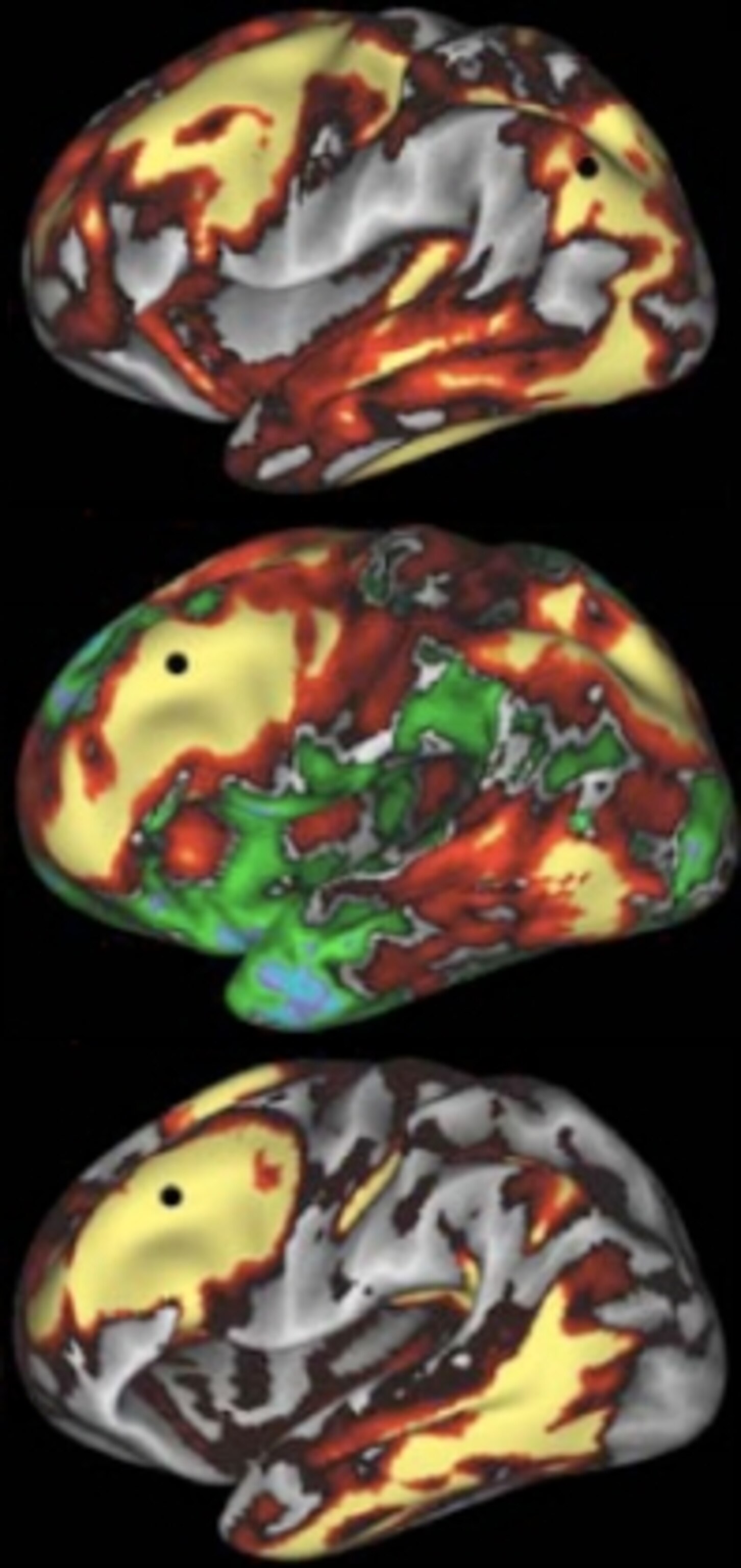In the mid-1990s, neuroscientist Marcus Raichle noticed something funny going on in some of his brain-scanning experiments.
Here’s what usually happens, more or less: someone lies inside of the scanner and performs a specific task, like pressing a button. In response to that particular task, some parts of the brain become more active. Voilà: you have identified the regions involved in button-pressing.
But Raichle observed that a couple of areas actually quiet down during a goal-directed task—during many different tasks, in fact. One of these spots is in the parietal lobe, in the middle of the back of the brain. Raichle thought the data was curious, but didn’t dwell on it. He threw the scans into a folder, labeled it MMPA—for ‘medial mystery parietal area’—and filed it away.
A few years passed before he realized the importance of the mystery area. In a 1997 analysis of nine older studies, he and colleagues at Washington University in St. Louis defined a whole bunch of regions that damp down together as soon as a task begins.
Raichle called the circuit the ‘default mode‘; in the popular press, it holds sexier titles, like the ‘daydreaming network‘ or even the ‘brain’s dark energy‘. The circuit’s hubs are thought to be involved in (among other things) introspection, envisioning the future and understanding others’ thoughts. The network has been fingered in a variety of brain disorders, from Alzheimer’s to schizophrenia.
Neuroscientists now know that the default network is just one of many circuits that show ‘resting-state functional connectivity’—an organized, baseline level of activity when the mind is wandering, or even sleeping. The hubs of the visual circuit, for example, are synchronized even when our eyes are closed; the motor system is in sync even when we’re not moving.
Raichle’s lab has measured metabolic patterns of the brain when engaged in various tasks, like moving your hand. “It’s trivial,” he told me the other day. Most of our mental power, it turns out, is reserved for the standby mode.
It’s worth taking a second to consider how very strange this is: every important circuit in the brain is quietly humming—and using up lots of energy—when we’re not focused on or doing anything in particular. I asked Raichle why that might be.
Nobody knows for sure, he said. But he has a theory: it’s about staying smartly organized.
If you zoom in to the level of molecules, every one of the brain’s trillions of connections is constantly changing: if a synapse is used, it’s strengthened; if it’s not used, it fades away. This plasticity allows us to quickly adapt to changing environments and learn new things. At the same time, when we wake up in the morning, we somehow retain the knowledge and the ego we had the day before, even though our brain chemistry has necessarily changed.
Raichle thinks that resting-state connections somehow help the brain achieve this difficult balance.
“It’s as if the brain needs to remind itself about where things are, what connections are important, which synapses should be talking to each other,” he said. “You can take this at the level of daydreaming, but I think what it’s unveiling is a far more fundamental set of relationships in the brain.”
**
For more details about the discovery of the brain’s default mode, see Raichle’s 2007 review article in Neuroimage.
Also of interest: A couple of weeks ago, Raichle’s colleagues at Wash U reported in Science that the brain’s major resting-state networks get stronger as we age.
Image courtesy of the Human Connectome Project
This post was originally published on The Last Word on Nothing

